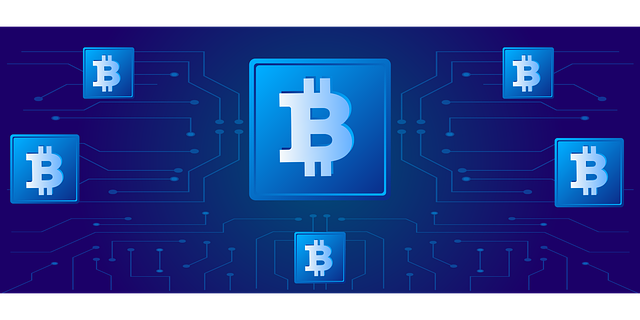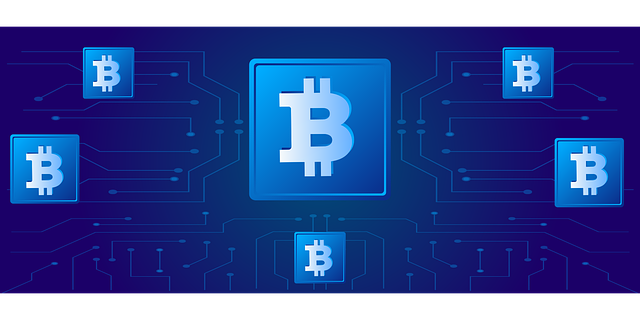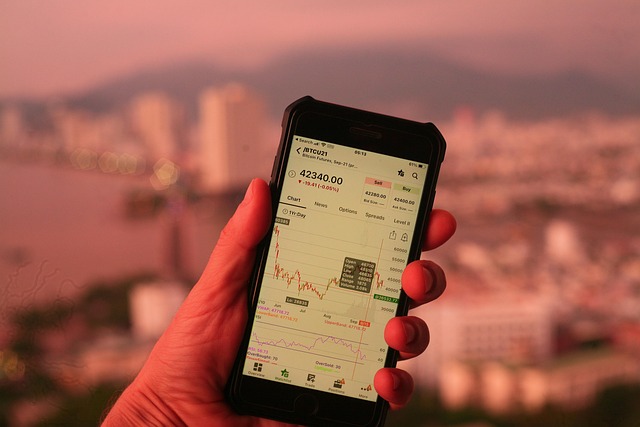What is Futures Trading Crypto Binance in 2025: An In-Depth Overview
Author: Jameson Richman Expert
Published On: 2025-08-17
Prepared by Jameson Richman and our team of experts with over a decade of experience in cryptocurrency and digital asset analysis. Learn more about us.
Futures trading within the cryptocurrency ecosystem on Binance in 2025 has evolved into one of the most sophisticated, high-stakes segments of financial markets. It enables traders to speculate on the future prices of digital assets without the need to own the underlying tokens directly. As the world's leading crypto exchange, Binance has continually expanded and refined its derivatives marketplace, introducing innovative products, advanced trading tools, and robust risk management solutions. This comprehensive overview delves into the core mechanics, technological innovations, strategic methodologies, associated risks, and future outlook of crypto futures trading on Binance in 2025. Traders and investors can leverage this knowledge to better navigate this complex and rapidly evolving landscape.

Understanding Crypto Futures: Core Principles and Mechanics
Crypto futures are legally binding contracts that obligate the buyer and the seller to transact a specific digital asset at a predetermined price on a future date or under specific conditions. They serve multiple strategic purposes:
- Speculation: Traders bet on market direction, aiming to profit from price movements without owning the assets.
- Hedging: Market participants reduce exposure to adverse price fluctuations, protecting their holdings or positions.
- Arbitrage: Exploiting price discrepancies between markets or products to generate risk-free profits.
Unlike spot trading, futures allow the use of leverage—borrowing funds to increase the size of positions. In 2025, Binance’s crypto futures mechanics include several sophisticated features:
- Perpetual Futures: These contracts have no fixed expiry date, allowing traders to hold positions indefinitely, provided they meet margin requirements. They incorporate a funding rate mechanism, which exchanges cash periodically between long and short positions based on the difference between perpetual contract prices and the underlying spot prices. This mechanism helps keep futures prices aligned with spot markets and incentivizes traders toward market equilibrium.
- Quarterly Futures: These standard futures have expiration dates typically aligned with quarterly cycles (e.g., March, June, September, December). Traders must close or roll over their positions before expiry, creating opportunities for strategic timing based on market outlooks, macroeconomic developments, or anticipated volatility.
- Margining Systems: Binance employs both isolated margin and cross-margin modes. Isolated margin constrains risk to individual positions, limiting potential losses to allocated collateral and protecting overall account health. Cross margin pools collateral across all open positions, offering flexibility but increasing systemic risk if not managed properly.
Leverage capacity on Binance can reach up to 125x on major assets like Bitcoin (BTC) and Ethereum (ETH), amplifying both gains and losses. The high volatility inherent in crypto markets necessitates rigorous risk management practices, including position sizing, stop-loss orders, and continuous monitoring to prevent liquidations and protect capital.
Binance Futures Platform in 2025: Features and Innovations
By 2025, Binance’s futures platform has become a technological powerhouse, integrating advanced features and innovations to optimize trading experience, security, and market depth. Key features include:
- Enhanced Leverage Options: Traders can access leverage up to 125x, enabling substantial position control with minimal initial capital. This high leverage facilitates short-term speculation and hedging but demands disciplined risk controls due to the increased potential for liquidation during volatile swings.
- Layered Risk Management Tools: The platform offers sophisticated order types such as stop-loss, take-profit, trailing stops, and conditional orders. These tools allow traders to automate risk mitigation, respond swiftly to market shifts, and reduce emotional trading errors, especially during high volatility episodes.
- Real-Time Analytics and Sentiment Indicators: Incorporating AI-driven insights, order book analysis, on-chain metrics, and social sentiment data provides traders with a comprehensive understanding of market dynamics. These insights help identify potential reversals, trend continuation points, and volatility spikes, enabling more informed decision-making.
- API and Algorithmic Trading: Binance’s enhanced APIs facilitate high-frequency and algorithmic trading strategies. Traders can deploy custom bots, machine learning models, and technical indicator-based algorithms for real-time execution, portfolio rebalancing, and predictive analytics.
- Multi-Platform and Cross-Asset Compatibility: Binance supports seamless trading on multiple devices and offers integrated access to various derivatives markets, including spot, futures, options, and DeFi-linked products. This ecosystem fosters diversified trading strategies and risk management approaches.
Risk Management and Responsible Trading Strategies
The promise of high leverage and rapid profit potential on Binance’s futures platform is tempered by significant risks, especially given the extreme volatility of cryptocurrencies. In 2025, responsible trading emphasizes strategic risk management, including:
- Position Sizing and Capital Allocation: Adherence to rules like risking only 1-2% of total capital per trade minimizes adverse impacts from market swings. Proper sizing helps sustain longer trading careers and reduces the likelihood of margin calls or forced liquidations.
- Automated Risk Controls: Utilizing stop-loss, take-profit, and trailing stop orders ensures trades are automatically closed at predefined levels, limiting losses during sudden downturns and locking in gains when targets are hit.
- Hedging and Diversification: Combining multiple assets, strategies, and derivatives (such as options and futures across different coins) spreads risk. For example, hedging Bitcoin futures with altcoin positions or options strategies provides downside protection.
- Continuous Education and Monitoring: Staying informed about technological updates, regulatory shifts, macroeconomic trends, and on-chain data is critical. Engaging with community discussions, research, and analytics tools supports proactive risk management and strategic adjustments.
Advanced traders employ techniques such as volatility-adjusted position sizing, scenario stress testing, and dynamic rebalancing to maintain resilience during unpredictable market phases.

Platforms and Ecosystem: Comparing Binance with Other Major Derivatives Exchanges
While Binance maintains its dominance, other platforms like MEXC, BitGet, and Bybit are competing through innovative fee models, leverage policies, and user-driven features. In 2025, choosing the right platform depends on several factors:
- Fee Structures and Incentives: Lower trading fees, maker-taker discounts, rebates, and loyalty programs attract high-volume traders and arbitrageurs.
- Leverage and Margin Policies: Different exchanges offer varying maximum leverage limits, margin calls, and liquidation thresholds, impacting trading aggressiveness and risk appetite.
- Order Types and Automation: Advanced order options such as OCO (One Cancels the Other), iceberg orders, and conditional triggers provide strategic flexibility and automation capabilities.
- Security and Regulatory Compliance: Robust security protocols, insurance coverage, and adherence to regional regulations enhance trader confidence and reduce systemic risks.
- Integration with DeFi and Layer-2 Solutions: Support for decentralized finance protocols, Layer 2 scaling (like zk-Rollups or Optimistic Rollups), and cross-chain interoperability unlock new arbitrage and hedging channels while reducing transaction costs and latency.
Analyzing Market Trends and Ecosystem Dynamics in 2025
Successful futures traders leverage an array of analytical tools combining technical analysis, fundamental research, and innovative data sources. In 2025, these include:
- On-Chain Metrics: Data such as network hash rate, transaction speeds, active addresses, token transfer volumes, and staking activity provide insights into ecosystem health and potential trend shifts.
- Market Sentiment and Social Data: AI-powered sentiment analysis from social media, news outlets, and community polls helps contextualize price movements, identifying overbought or oversold conditions and sentiment shifts.
- Order Book and Liquidity Analysis: Depth charts, bid-ask spreads, and volume profile tools reveal liquidity concentrations, support/resistance zones, and potential market impact scenarios.
- Big Data and Machine Learning: Advanced analytics identify emerging patterns, correlations, and predictive signals, enabling preemptive trading decisions and proactive risk management.
Market Prediction and External Factors in 2025
The trajectory of crypto futures trading on Binance is heavily influenced by macroeconomic policies, technological advances, regulatory developments, and geopolitical events. Key external factors include:
- Global Economic Policies: Changes in interest rates, monetary easing, and fiscal stimuli influence liquidity and risk appetite, impacting crypto markets as alternative assets.
- Regulatory Environment: Evolving regulations, such as derivatives licensing, KYC/AML enforcement, and regional restrictions, shape market accessibility and behavior, potentially introducing volatility or stability depending on policy shifts.
- Blockchain and Protocol Innovations: Scalability enhancements, interoperability solutions, and privacy protocols influence asset valuations and trading volumes, fostering new arbitrage and hedging opportunities.
- DeFi and Layer-2 Adoption: Widespread adoption of decentralized finance and Layer 2 solutions like zk-Rollups or Validium will reduce transaction costs, increase throughput, and enable near-instant settlement, attracting institutional and retail participants and broadening market depth.
For example, integrating DeFi derivatives on Layer 2 can facilitate high-frequency, low-cost trading, pushing the boundaries of what’s possible in crypto futures markets.

Future Outlook and The Path Forward
Looking ahead to 2025, the evolution of Binance’s crypto futures trading will be driven by technological innovation—particularly artificial intelligence, machine learning, big data analytics, and blockchain advancements. These will underpin development of sophisticated predictive algorithms, dynamic risk management tools, and automated trading systems capable of adapting instantaneously to market fluctuations.
The increasing participation of institutional investors, coupled with clearer regulatory frameworks, promises greater market stability, transparency, and legitimacy. However, inherent volatility, technological disruptions, and evolving regulations remain ongoing challenges. Success will depend on continuous education, disciplined risk management, technological agility, and strategic flexibility. Traders who embrace innovation while maintaining a responsible approach are poised to capitalize on emerging opportunities.
Conclusion: Navigating the Future of Crypto Futures Trading on Binance
Crypto futures trading on Binance in 2025 offers considerable potential for profit, hedging, and diversification, but requires mastery over platform capabilities, risk mitigation strategies, and analytical techniques. Embracing technological advancements, understanding systemic shifts, and practicing disciplined trading are key to sustained success. As markets mature, those who combine innovation with responsibility will be best positioned to exploit new opportunities while managing risks effectively.
Whether you are a seasoned professional or a newcomer, continuous learning, adaptive strategies, and prudent risk management remain your strongest assets. Keeping abreast of technological progress, regulatory developments, and macroeconomic trends will help you navigate the complexities of crypto futures trading on Binance in 2025 and beyond, ultimately fostering long-term growth and resilience in your trading endeavors.